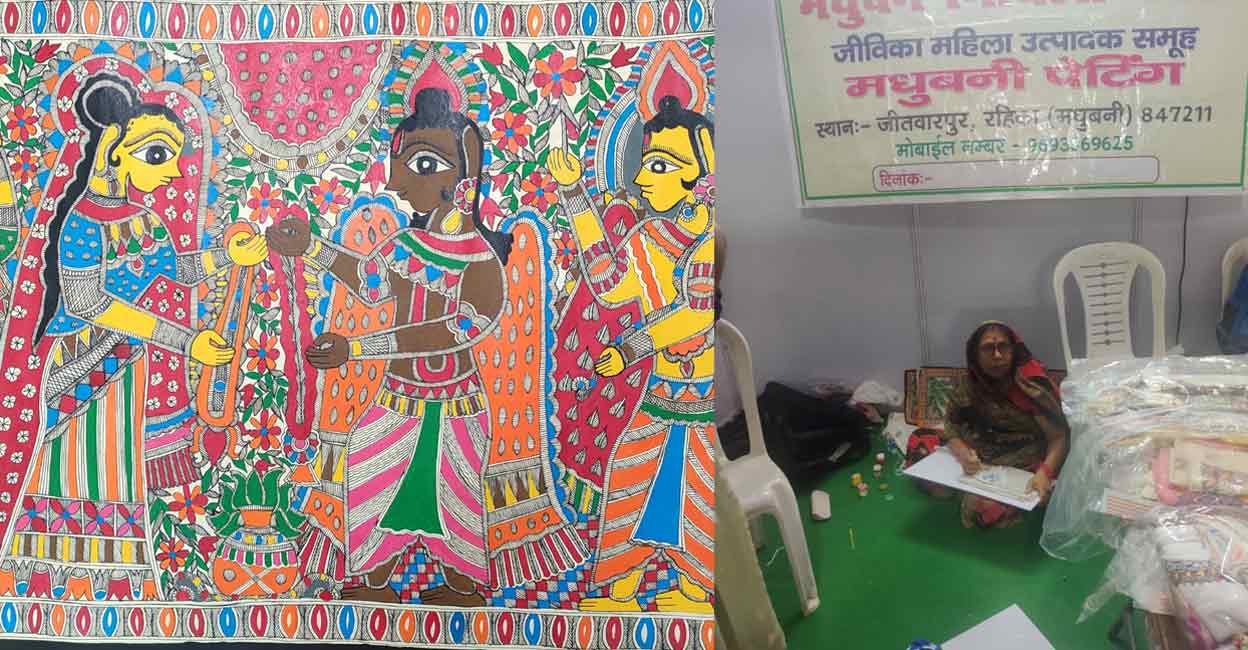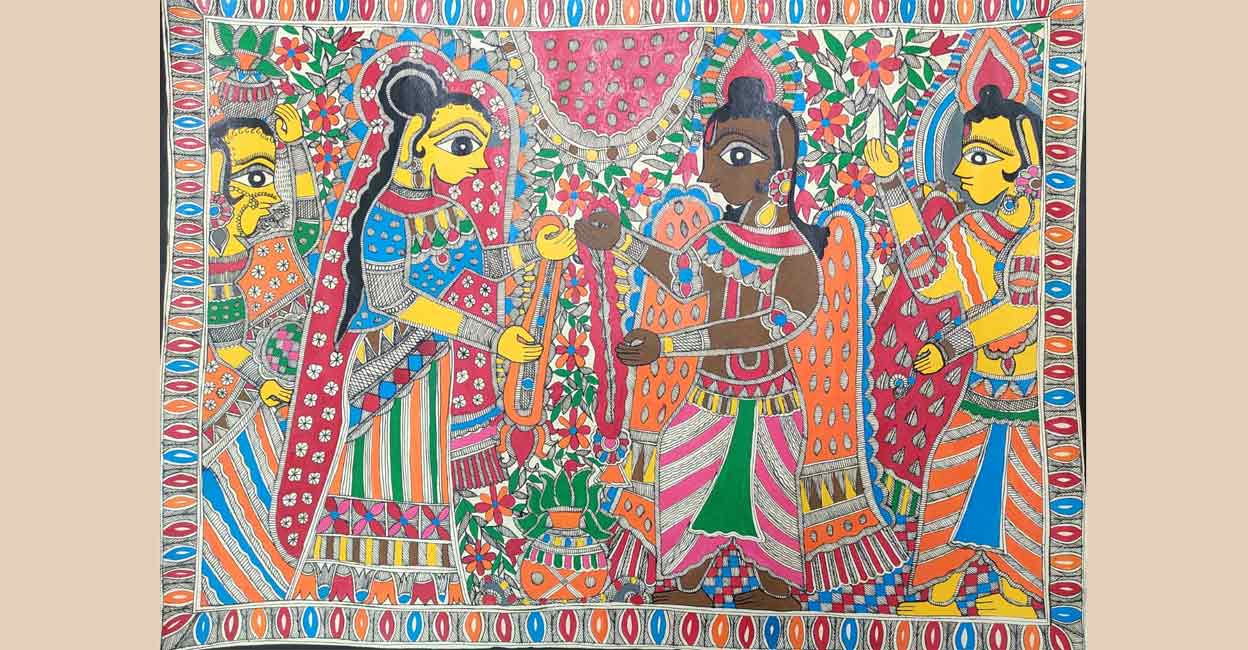From Madhubani to Marayur, how women are making a transformation

Mail This Article
Poring over a parchment, 55-year-old Mudrakala from Madhubani district of Bihar is all focus and concentration as she uses vegetable dyes, some twigs, a matchstick to finish her painting. As I watched, she gave finishing touches to a 4ft X 3ft painting — what she titles as “Sita Swayvamvar” at Kanakakkunnu in Kerala’s capital, Thiruvananthapuram where the State and Central Governments have organised an all-India meet of women-entrepreneurs like Mudrakala.
“It has taken me eight days of hard work to finish this work. The exquisite painting with minutiae touches galore (please see picture), sells for Rs 1000 and I may make about Rs 400 for my labour,” she says as her nephew Poonam Kumari tends to the stall.
Like her, micro entrepreneurs from 28 states and 8 Union territories across the country are taking part in the programme through some 250 stalls. SARAS, as the event is known is into its 7th edition, after a gap of two years.It provides an annual platform for them to showcase and sell their products.
These women are part of the Deendayal Antyodaya Yojana (DAY) or the National Rural Livelihood Mission of the Indian Government which is credit-linking women running micro businesses and providing support of counsellors and technically qualified mentors.

There are about 72 lakh Self Help Groups ( of women numbering say 10/12) with outstanding loans of Rs 1.17 lakh crores all over the country whose lives have changed for the better due to the intervention of State Governments working in Mission Mode, the Union Government’s Rural Development Ministry driving it and banks lending small sums of money.
More than the income/surplus generation, it is the empowerment or the feeling of being financial agents for growth that makes these women proud of their involvement in the SHG movement.
Kerala has been a trend-setter in this with its Kudumbasree structure but other States including Bihar, West Bengal and Odissa are catching up fast. The Southern States have always had a good structure for the women’s SHGs and the credit deployment is also relatively high.
At the expo, I met Valli Amma and Pushpa, both members of the Irula tribe from Attappadi who are selling turmeric and Ragi, grown around their area. “We have taken loans from a bank through the Kudumbasree and repayment is regular. It has helped us in getting additional income,” said Pushpa. There are about 8 other women working in their unit at Attappadi and the State Government is providing counselling support through its Micro Entrepreneur Consultants (MEC) who prepare brief project reports. The MECs themselves are trained for about a year on how to handhold the SHG enterprises. Nearby is a stall selling Marayur jaggery, made from sugarcane cultivation at about 5000 ft above sea-level. Again, the unit provides jobs to about a dozen women.

As I wind up a walk-through of SARAS, my attention is drawn to Sandhya, a transgender from Kannur who says that her Nanma SHG consists entirely of transgenders and Kudumbasree has helped her become integrated into society.
SARAS’s main draw is however its food court where cuisine from all over India (Sikkim, Manipur, Punjab, Bihar included) is spread out. At very modest prices and served on eco-friendly palmyra plates, the straight-from-the-hearth food gives you a glimpse of what is cooking in Indian kitchens.
The expo proves the transformative power of empowered women.


